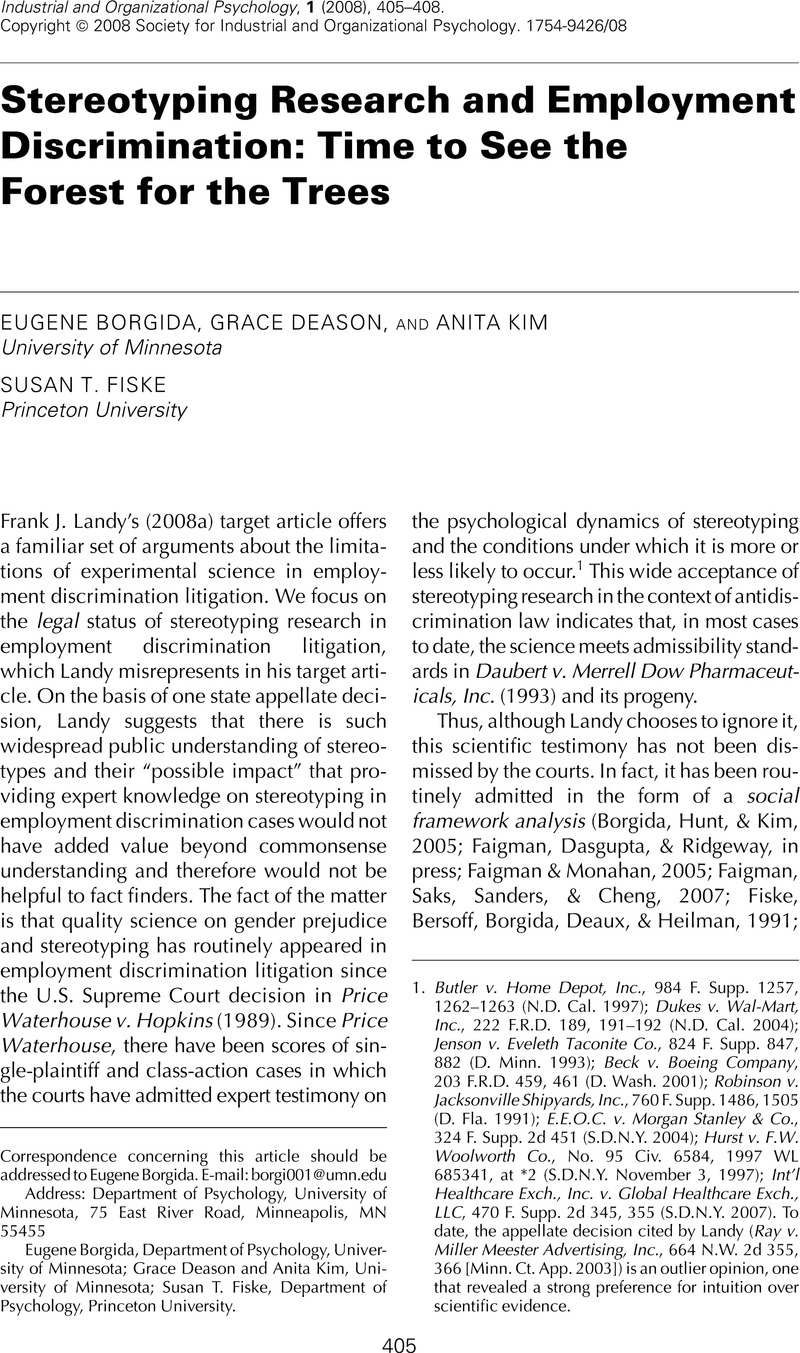Crossref Citations
This article has been cited by the following publications. This list is generated based on data provided by Crossref.
Landy, Frank J.
2008.
Stereotyping, Implicit Association Theory, and Personnel Decisions: I Guess We Will Just Have to Agree to Disagree.
Industrial and Organizational Psychology,
Vol. 1,
Issue. 4,
p.
444.
Fisher, Emily L.
and
Borgida, Eugene
2012.
Intergroup Disparities and Implicit Bias: A Commentary.
Journal of Social Issues,
Vol. 68,
Issue. 2,
p.
385.
Cuadrado, Isabel
García‐Ael, Cristina
and
Molero, Fernando
2015.
Gender‐typing of leadership: Evaluations of real and ideal managers.
Scandinavian Journal of Psychology,
Vol. 56,
Issue. 2,
p.
236.



